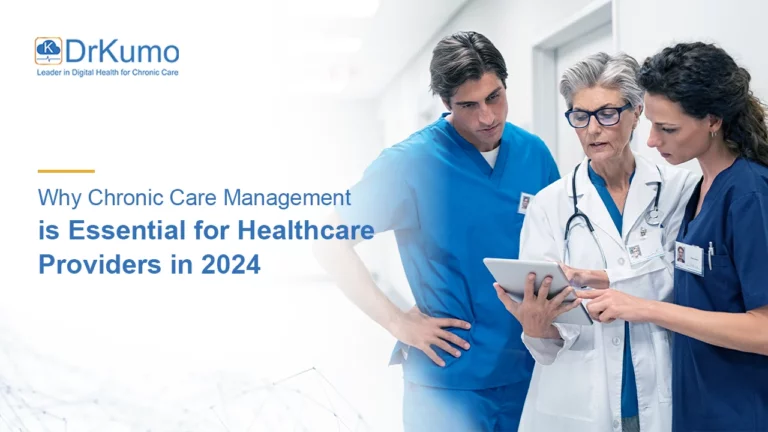The healthcare landscape is evolving rapidly, with the integration of technology playing a significant role in improving the management of chronic diseases. Remote Patient Monitoring (RPM) has emerged as a powerful tool that allows healthcare providers to monitor patients’ health data outside of traditional clinical settings.
As chronic conditions such as heart failure, COPD, diabetes, and hypertension continue to place a significant burden on healthcare systems, RPM often offers innovative solutions for reducing costs, improving patient outcomes, and increasing patient adherence to prescribed treatments.
A recent systematic review by Tan et al. (2024) examined the impact of RPM on several key outcomes in healthcare, including adherence, quality of life, and cost-effectiveness. The study shed light on how RPM can enhance patient safety, reduce hospital readmissions, and improve the overall efficiency of healthcare delivery.
In this article, we explore the key findings from the study, diving deeper into the benefits of patient monitoring and how it is transforming chronic disease management.
RPM and Patient Adherence: Enhancing Treatment Compliance
One of the most significant challenges in healthcare is ensuring patient adherence to prescribed treatments, especially for individuals with chronic conditions. Non-adherence to medication and lifestyle changes is a leading cause of disease progression and hospital readmissions. RPM can help address adherence challenges by enabling continuous monitoring and providing real-time data, which supports healthcare teams in making timely interventions when possible.
A recent study by Tan et al. (2024) found that RPM significantly improved patient adherence to both medication regimens and lifestyle modifications. By regularly monitoring key health metrics such as blood pressure, glucose levels, weight, and oxygen saturation, remote patient monitoring systems provided patients with constant feedback, reinforcing the importance of adhering to their treatment plans.
A cardiac rehabilitation study by Blasco et al. (2012) and a study on the impact of mobile health intervention by Geramita et al. (2020) reported significant improvements in adherence to exercise routines and lifestyle changes, as well as medication adherence, for patients using RPM technologies.
Moreover, another study found that patients monitored through electronic pill bottles (medication event monitoring systems) had higher medication adherence compared to those who were not monitored. This continuous oversight ensures that patients stay on track with their care plan, preventing complications and hospitalizations down the line.
Enhancing Quality of Life with RPM
Beyond adherence, quality of life (QoL) is another critical outcome that RPM can positively influence. Chronic disease management often requires long-term adjustments and can significantly affect a patient’s physical, emotional, and social well-being. RPM has been associated with proactive care that can improve quality of life for many patients managing chronic conditions.
The Tan et al. (2024) review revealed that RPM had positive impacts on patients’ mobility and functional status. For example, a randomized controlled trial found that COPD patients who used home-based telerehabilitation through RPM showed improvements in walking distances and overall functional capacity. Additionally, another research study in China reported similar benefits for cardiac rehabilitation patients, where those monitored remotely had better mobility and a higher quality of life compared to those who received traditional care.
RPM systems also help reduce the psychological burden of chronic diseases by providing constant support and guidance. This is especially important for elderly patients or those living in remote areas, who may not have easy access to in-person care. By allowing patients to manage their conditions at home with guidance from healthcare providers, RPM fosters a sense of independence by allowing patients to actively engage in managing their conditions, which can positively impact their emotional and mental well-being.
RPM and Cost-Effectiveness: Reducing Healthcare Costs
One of the most compelling arguments for the widespread adoption of RPM is its potential to reduce healthcare costs. The rise in chronic diseases has led to an increase in hospital admissions, length of stay, and emergency department visits, all of which are costly for healthcare systems. By enabling early detection and timely interventions, RPM can help reduce hospitalizations and emergency care, leading to significant cost savings in many studies.
Tan et al. (2024) also found that RPM interventions were associated with lower hospital admissions and readmissions, as well as reduced length of stay. An economic analysis found that RPM interventions for heart failure patients led to fewer hospital admissions and resulted in cost savings over the long term. Similarly, a randomized controlled trial reported that RPM for cardiac disease patients significantly reduced 30-day readmission rates, thereby decreasing hospital expenditures.
In addition to reducing hospital stays, RPM can also decrease outpatient visit costs. A study found that RPM reduced follow-up visits by lowering the need for in-person consultations and relying more on remote monitoring, which is more cost-effective.
The Broader Impact of RPM in Healthcare
While the primary focus of Tan et al. (2024) was on the impact of RPM on adherence, quality of life, and cost-effectiveness, the review also highlighted several other benefits of RPM that are contributing to its growing popularity. RPM has shown potential to enhance patient safety by enabling earlier detection of health issues, thereby supporting timely interventions. Other aforementioned studies have shown that RPM can lead to fewer major complications and reduce hospital readmissions, further supporting its role in enhancing patient safety.
Moreover, RPM’s ability to increase patient engagement in their own care has been widely recognized. Tan et al. (2024) noted that patients who used RPM technologies felt more in control of their health, as they could actively monitor their progress and interact regularly with their healthcare providers. This increased engagement not only improves adherence but also promotes better disease management overall.
How DrKumo Enhances RPM for Better Care and Cost Savings
DrKumo’s RPM technology solutions offer a comprehensive solution for healthcare providers, enabling real-time monitoring of patients’ vital signs with FDA-approved devices like blood pressure monitors and glucose meters. By providing continuous health data, DrKumo allows healthcare teams to identify early health risks and support timely interventions to improve adherence and potentially reduce hospital visits.
Beyond improving adherence, DrKumo enhances quality of life by ensuring timely interventions that prevent hospitalizations. By reducing acute care utilization, DrKumo’s RPM platform helps healthcare providers offer cost-effective, proactive care that lowers hospital readmissions and supports patient independence, all while improving overall health outcomes.
Takeaways
The systematic review by Tan et al. (2024) underscores the significant benefits of RPM in improving adherence, quality of life, and cost-effectiveness for patients managing chronic diseases. RPM enables healthcare providers to monitor patient health remotely, ensuring early detection of issues, timely interventions, and better disease management. By reducing hospital admissions, emergency department visits, and length of stay, RPM offers a cost-effective solution for managing chronic diseases, benefiting both healthcare systems and patients.
The review highlights the importance of integrating RPM into chronic disease management, as it not only reduces acute care utilization but also fosters patient engagement, improves mobility, and enhances quality of life. As technology continues to evolve, RPM has the potential to transform healthcare delivery, providing cost-effective, efficient, and patient-centered care.
Ready to enhance your chronic care management and reduce the risk of hospital admissions? Contact DrKumo today to discover how our AI-powered RPM platform can improve patient adherence, quality of life, and cost-effectiveness.
Disclaimer: This blog is for informational purposes only and should not be considered medical advice. Always consult with a healthcare professional before making any changes to your treatment plan, and refer to Tan et al. (2024) for detailed findings on the impact of RPM interventions.








